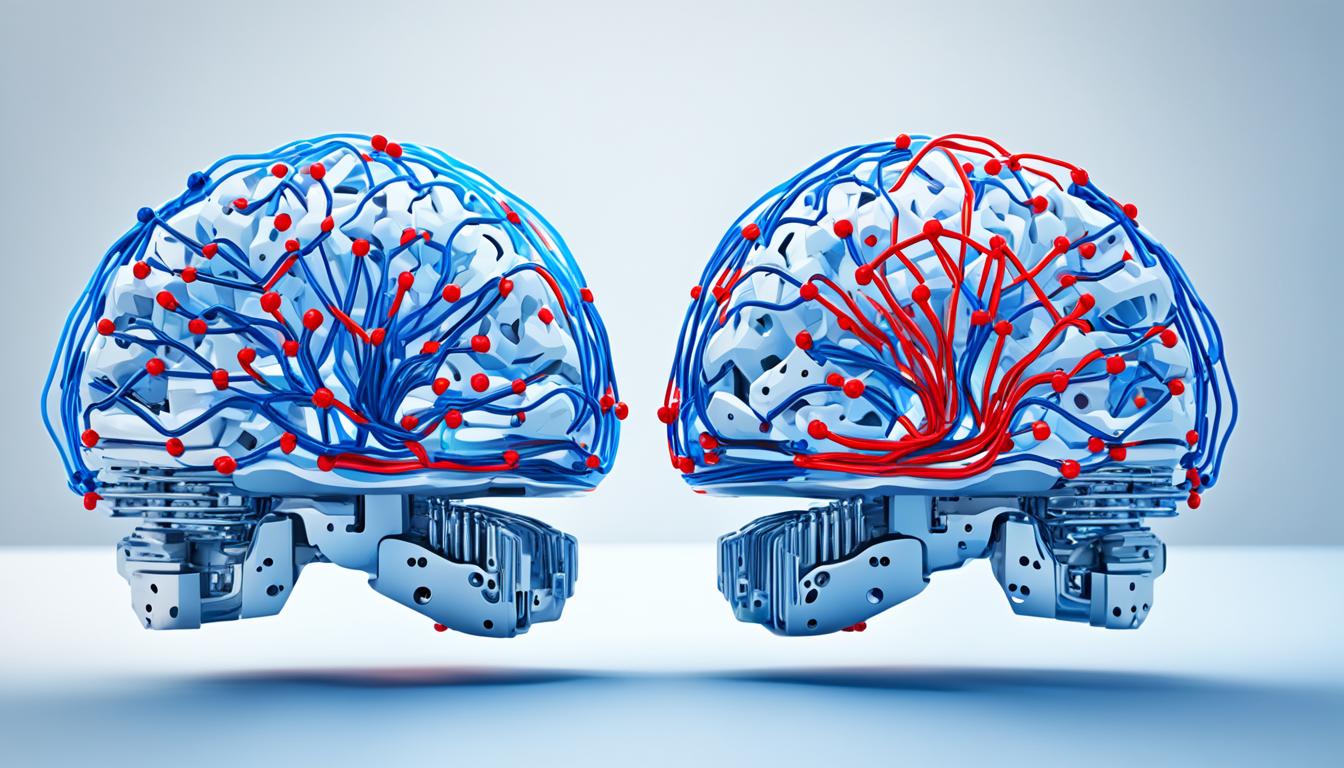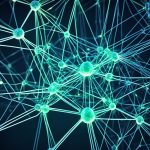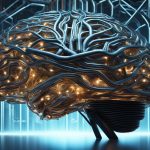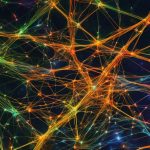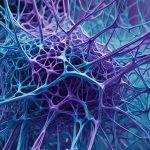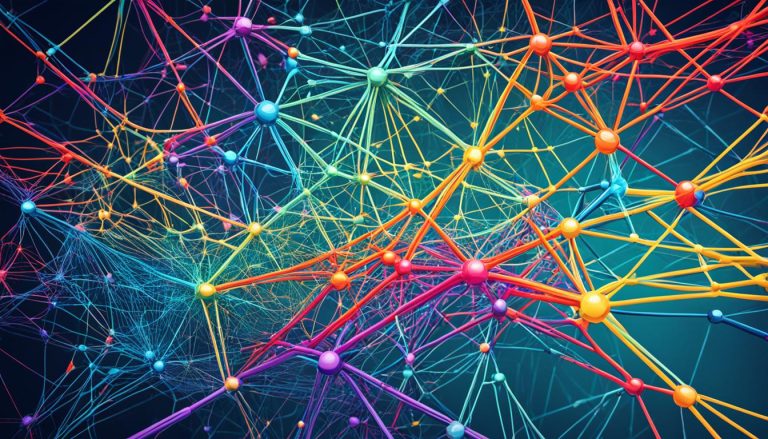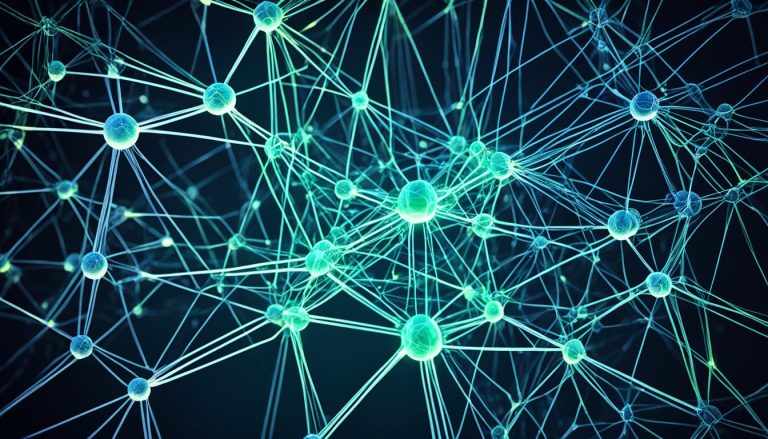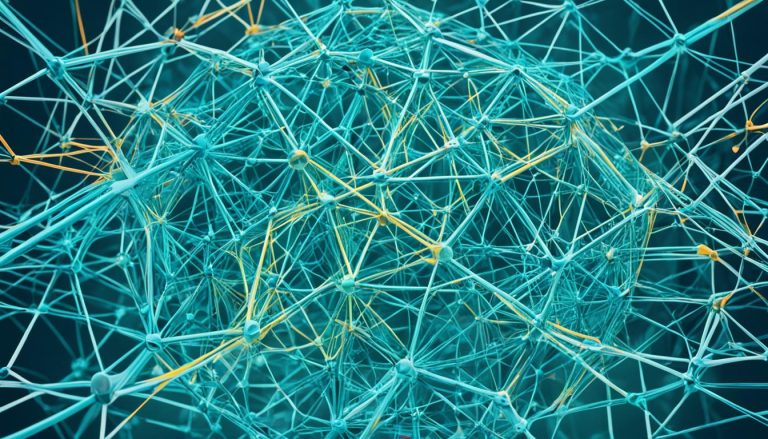Dual learning models have become a game-changer in the realm of artificial intelligence (AI) by significantly improving the accuracy of AI systems. By leveraging the power of multiple language models and integrating cutting-edge techniques, dual learning models offer a promising solution for enhancing the precision and efficiency of machine learning solutions.
With the ever-increasing demand for accurate AI predictions, the need for advanced methodologies has become paramount. Dual learning models address this challenge by combining the strengths of multiple models, allowing them to learn from each other’s mistakes and leverage contextual information effectively.
Through extensive research and collaboration with top-tier institutions such as MIT’s Computer Science and Artificial Intelligence Laboratory (CSAIL), experts have been able to unlock the true potential of dual learning models. This article delves into the benefits and methodologies of implementing dual learning models, shedding light on how they can significantly elevate the accuracy of machine learning solutions.
In the subsequent sections, we will explore key aspects such as model accuracy in machine learning, the role of data augmentation, feature engineering, and ensemble methods in boosting accuracy. Additionally, we will delve into the significance of treating missing and outlier values, exploring multiple algorithms, and fine-tuning models through algorithm optimization.
By incorporating these techniques into the development cycle of AI systems, organizations can unlock the full potential of their models and provide more accurate predictions to meet various real-world challenges. Stay tuned to explore how each of these methodologies contributes to the quest for enhanced accuracy in machine learning solutions.
What is Model Accuracy in Machine Learning?
Model accuracy, a fundamental performance metric in machine learning, is a key measure of how well a model performs by quantifying its ability to make correct predictions. It plays a crucial role in evaluating the reliability and suitability of AI models for real-world applications. By understanding and optimizing model accuracy, data scientists can enhance the predictive capabilities and overall performance of machine learning solutions.
Model accuracy is closely related to the concept of the confusion matrix, which summarizes the model’s predictions. The calculation of accuracy involves dividing the number of correct predictions by the total number of predictions across all classes. This performance metric is particularly valuable for tasks such as binary classification, where the goal is to classify instances into one of two distinct classes.
“Model accuracy is a crucial factor in assessing the reliability and suitability of AI models for real-world applications.”
Accurate predictions are essential in many machine learning tasks, ranging from spam email detection to medical diagnosis. The higher the model accuracy, the more confident we can be in the predictions made by the AI system.
Performance Evaluation using Model Accuracy
Model accuracy serves as a practical performance metric for evaluating the effectiveness of machine learning models. It allows data scientists to measure and compare the performance of different models or variations of the same model.
When evaluating model accuracy, it is important to consider the specific requirements and constraints of the problem at hand. While high accuracy is generally desirable, it may not always be the primary objective. For example, in situations where false negatives are particularly costly, it may be more important to prioritize recall (the ability to correctly identify all positive instances) over overall accuracy.
Optimizing Accuracy through Model Improvement
To improve model accuracy, data scientists employ various strategies such as:
- Fine-tuning model hyperparameters through algorithm tuning
- Exploring and incorporating multiple algorithms
- Performing thorough feature engineering
- Handling missing values and outlier data
- Using ensemble methods to combine multiple models
By implementing these techniques and continually iterating on the model development process, data scientists can strive for greater model accuracy and more reliable predictions.
| Model | Accuracy |
|---|---|
| Model 1 | 0.85 |
| Model 2 | 0.92 |
| Model 3 | 0.88 |
Table: Comparison of Model Accuracies
Add More Data
Adding more data to the training set is a proven method to improve the accuracy of machine learning models. By increasing the volume and diversity of data, the models can **learn from a wider range of examples**, reducing reliance on assumptions and weak correlations. While it may not always be feasible to add more data in certain scenarios, such as data science competitions, it is highly recommended to consider requesting additional data in real-world projects. **More data provides more opportunities for the models to identify patterns** and generalize better, resulting in more accurate predictions.
One of the key advantages of adding more data is the **improved accuracy** it brings to the machine learning models. With a larger and more diverse dataset, models can better understand the underlying patterns and trends, making it easier to accurately predict outcomes. The additional data acts as a **countermeasure to overfitting**, a common problem in machine learning models where the model becomes too closely aligned with the training data, resulting in poor performance on new, unseen data.
“The more data the better, so long as we can effectively utilize it.”
In a field where data is king, the importance of diverse datasets cannot be overstated. **Diverse datasets ensure that the models have exposure to a wide range of scenarios and edge cases**, allowing them to make accurate predictions in different contexts. By including data from various sources, industries, and demographics, we can reduce bias and ensure that our models are robust and reliable.
Incorporating more data into machine learning models requires careful consideration of data quality, preprocessing, and data collection mechanisms. Organizations need to strike a balance between quantity and quality, ensuring that the added data is relevant and reliable. **Data cleansing processes** should be implemented to handle any outliers, missing values, or noise that could negatively impact the model’s performance.
The benefits of adding more data are further amplified when combined with other techniques such as **feature engineering** and **ensemble methods**. Feature engineering allows us to extract more meaningful information from the data, while ensemble methods leverage the collective intelligence of multiple models to achieve superior accuracy.
By leveraging the power of bigger and better datasets, we can drive the development of **more accurate and reliable machine learning models** that have a tangible impact across various industries and applications.
Dataset Examples
Here are some examples of the types of datasets that can be added to improve the accuracy of machine learning models:
- Social media data: Incorporating data from social media platforms can provide valuable insights into user behavior, sentiment analysis, and customer preferences.
- Sensor data: Data collected from various sensors, such as temperature sensors or motion sensors, can be used to predict equipment failure, optimize resource allocation, and improve operational efficiency.
- Healthcare data: Health records, patient demographics, and medical imaging data can be used to develop more accurate disease diagnosis models, personalized treatment plans, and prediction of patient outcomes.
- Financial data: Incorporating financial data, including historical stock prices, economic indicators, and market sentiment, can enhance the accuracy of stock market prediction models and algorithmic trading strategies.
The possibilities are endless when it comes to sourcing and incorporating diverse datasets. Organizations should explore partnerships and collaborations to gain access to unique data sources that can enrich their machine learning models and improve accuracy.
Table 1: Impact of Diverse Datasets on Accuracy
| Model | Training Data | Accuracy |
|---|---|---|
| Model A | Single source dataset | 82% |
| Model B | Diverse datasets from different sources | 92% |
| Model C | Diverse datasets with increased volume | 95% |
The table above demonstrates the positive impact of incorporating diverse datasets on the accuracy of machine learning models. As the training data becomes more diverse and voluminous, the accuracy of the models improves significantly.
Treat Missing and Outlier Values
Missing and outlier values in training data can significantly affect the accuracy of machine learning models. It is essential to treat missing and outlier values to reduce bias and enhance the reliability of trained models.
When dealing with missing values, various methods can be used to handle them effectively. For continuous variables, one common approach is to impute missing values with the mean, median, or mode of the available data. This ensures that the missing values are replaced with representative values based on the existing data distribution. For categorical variables, missing values can be treated as a separate class, allowing the model to learn and make predictions accordingly.
Outliers are extreme or unusual values that fall outside the typical range of the dataset. To address outliers, there are several strategies that data scientists can employ. One method is to delete observations that are considered outliers, removing their influence on the model. Another approach involves performing transformations, such as logarithm or power transformations, to normalize the data and mitigate the impact of outliers. Alternatively, outliers can be treated separately, creating a separate category or variable for them.
By effectively treating missing and outlier values, the quality of the training data improves, leading to better model accuracy. It helps to reduce bias and noise in the data, enabling the machine learning models to make more reliable predictions.
Feature Engineering
Feature engineering is a fundamental technique that data scientists use to enhance the accuracy of machine learning models. By extracting more information from existing data and creating new features, they can improve the model’s ability to explain the variance in the data.
Hypothesis generation and structured thinking are essential components of the feature engineering process. Data scientists formulate hypotheses about potential relationships and patterns in the data, guiding them to explore and create features that capture these insights.
Feature engineering offers various transformation techniques that optimize model performance. For example, data normalization can be applied to bring all features to a similar scale, preventing one feature from dominating the others. Handling skewness in the data improves the model’s ability to generalize by reducing the influence of extreme values. Data discretization, on the other hand, can group continuous features into discrete intervals, simplifying complex relationships and enhancing model interpretability.
Feature engineering is an iterative process that empowers data scientists to unlock the full potential of their models. By capturing the most relevant information through creative feature extraction and transformation, they can significantly improve accuracy and derive more meaningful insights from the data.
The Role of Feature Engineering
Feature engineering plays a crucial role in improving the accuracy of machine learning models. It enables data scientists to:
- Create new features based on domain knowledge and data understanding.
- Derive more relevant information from existing features.
- Reduce the dimensionality of the data.
- Handle missing values and outliers appropriately.
- Enhance the model’s ability to generalize.
By effectively performing feature engineering, data scientists can optimize their models to make more accurate predictions and uncover deeper insights from the data.
Example: Feature Engineering for Image Classification
Consider an image classification task where the goal is to classify images into different categories. Feature engineering in this context involves extracting meaningful features from the images that can help distinguish between classes.
One common approach is to use pre-trained convolutional neural networks (CNNs) as feature extractors. The output from the last hidden layer of the CNN can capture high-level features like shapes, edges, and textures. These features can then be used as input to a separate classifier, such as a support vector machine (SVM), to make predictions.

Additionally, data augmentation techniques can be employed to create new training samples by applying random transformations to the existing images, such as rotations, flips, and translations. Data augmentation helps increase the diversity of the training data and reduces the risk of overfitting.
| Techniques | Benefits |
|---|---|
| Pre-trained CNN as feature extractor | Captures high-level features from images |
| Data augmentation | Increases training data diversity |
By employing feature engineering techniques like using pre-trained CNNs and data augmentation, data scientists can significantly improve the accuracy of image classification models.
Multiple Algorithms
Implementing multiple algorithms is a proven strategy to enhance the accuracy of machine learning models. Each algorithm brings its own unique strengths and weaknesses to the table, and by exploring different options, data scientists can identify the best fit for their specific data and problem. By conducting a comprehensive analysis of multiple algorithms, they can ensure that the chosen model optimizes accuracy and delivers reliable results.
Research in the field of machine learning constantly pushes the boundaries of what is possible, with new algorithms being developed and refined. By benchmarking different algorithms and approaches, researchers can contribute to the advancement of the field and promote the improvement of AI solutions. The diversity of algorithms available allows for a rich and varied landscape of experimentation and optimization.
“Exploring multiple algorithms is akin to having a toolbox filled with different tools. Each algorithm serves a specific purpose and excels in certain scenarios. By employing multiple algorithms, we can leverage their combined strengths to create a more robust and accurate model.”
The selection of algorithms should be driven by a thorough understanding of the problem at hand and the data available. By considering the unique requirements and characteristics of the dataset, data scientists can make informed decisions about which algorithms to employ. Furthermore, by leveraging a combination of algorithms, the limitations of one model can be complemented by the strengths of another, leading to improved accuracy and performance.
Additionally, combining multiple algorithms encourages a broader exploration of the solution space. Machine learning models benefit from the exploration of diverse perspectives, allowing for a more comprehensive understanding of the data. This, in turn, leads to better-informed predictions and enhanced accuracy.
Benefits of Multiple Algorithms:
- Increased accuracy through complementary strengths
- Improved performance across various datasets and problem domains
- Enhanced predictions through the exploration of diverse solution spaces
- Reduced risk of bias or overfitting associated with single-algorithm approaches
It is important to note that the implementation of multiple algorithms comes with its own challenges. Robust experimentation, careful analysis of results, and the development of ensemble methods that effectively combine the outputs of each algorithm are necessary for success. Nonetheless, the potential benefits of leveraging multiple algorithms make this approach a valuable one in the pursuit of accuracy improvement in machine learning models.
By embracing the concept of multiple algorithms and continuously pushing the boundaries of what is possible, researchers and data scientists can pave the way for more accurate and reliable AI solutions.
| Algorithm | Strengths | Weaknesses |
|---|---|---|
| Random Forest | Robustness to noise and outliers | Can be computationally expensive |
| Support Vector Machines (SVM) | Effective in high-dimensional spaces | Sensitive to the choice of kernel function |
| Gradient Boosting | High predictive power | Potential overfitting if not tuned properly |
| K-Nearest Neighbors (KNN) | Simple and intuitive | Sensitive to the choice of k value |
Algorithm Tuning
Algorithm tuning plays a crucial role in optimizing machine learning models to achieve improved accuracy. By adjusting the hyperparameters of the algorithms, data scientists can fine-tune the performance of their models.
During the algorithm tuning process, data scientists focus on finding the optimal values for the hyperparameters that are best suited to the specific dataset and problem at hand. This fine-grained adjustment allows for maximum model performance.
Hyperparameter optimization techniques, such as grid search and random search, enable data scientists to explore the parameter space efficiently. By systematically testing different combinations of hyperparameters, they can identify the best configuration that enhances the accuracy of the model.
Algorithm tuning is often done in conjunction with feature engineering and other optimization methods to achieve the best possible performance. By carefully adjusting the hyperparameters, data scientists can unlock the full potential of their machine learning models and improve accuracy.
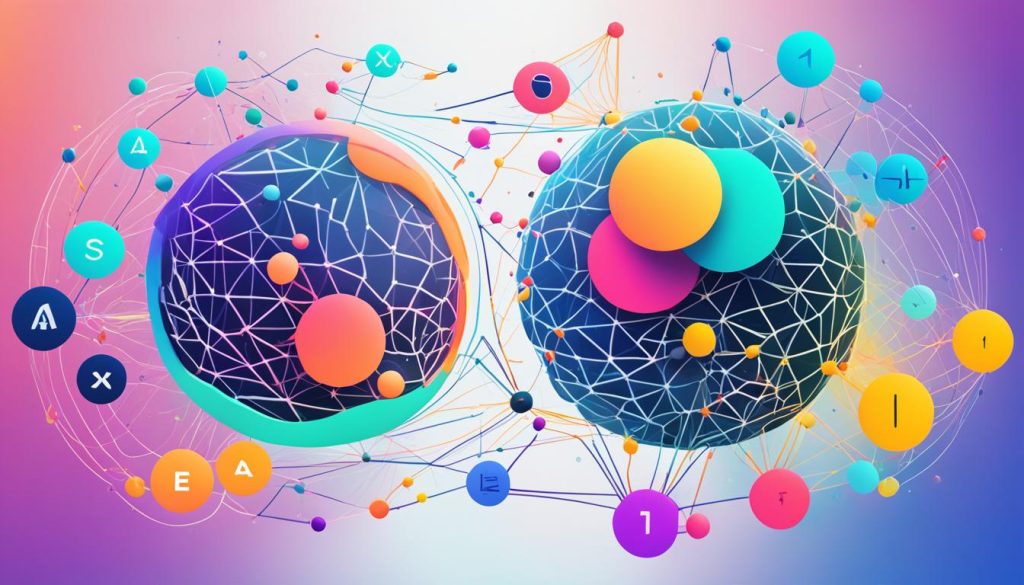
Algorithm Tuning Techniques
There are several techniques that data scientists can utilize for algorithm tuning:
- Grid Search: This technique involves exhaustively searching through a manually defined subset of the hyperparameter space. The model is evaluated for each combination of hyperparameters, allowing data scientists to determine the optimal configuration.
- Random Search: In contrast to grid search, random search randomly samples hyperparameter combinations within a defined range. This technique is effective when the hyperparameter space is extensive and manually defining a subset for grid search is not feasible.
- Bayesian Optimization: Bayesian optimization is a sequential model-based optimization technique that predicts the next best hyperparameters based on historical evaluations. It is particularly useful when evaluating the performance of computationally expensive models.
- Genetic Algorithms: Genetic algorithms mimic the process of natural selection to optimize hyperparameters. By evolving a population of potential solutions through generations, genetic algorithms can identify optimal configurations.
These algorithm tuning techniques enable data scientists to efficiently explore the hyperparameter space and improve the accuracy of their models.
Benefit of Algorithm Tuning
The benefits of algorithm tuning in machine learning models are significant. By optimizing the hyperparameters, data scientists can:
- Achieve higher accuracy: Fine-tuning the model’s hyperparameters leads to more precise and accurate predictions, improving the overall performance.
- Reduce overfitting: Tuning hyperparameters can prevent overfitting, a common issue where the model performs well on the training data but fails to generalize to unseen data.
- Enhance interpretability: Algorithm tuning allows data scientists to control the complexity of the model, resulting in more interpretable and explainable predictions.
- Increase efficiency: Optimized hyperparameters can lead to more efficient models, reducing computational resources and improving inference speed.
Algorithm tuning is an essential step in the model development process, enabling data scientists to fine-tune their machine learning models and improve accuracy.
| Benefits of Algorithm Tuning | Techniques for Algorithm Tuning |
|---|---|
| 1. Achieve higher accuracy | 1. Grid Search |
| 2. Reduce overfitting | 2. Random Search |
| 3. Enhance interpretability | 3. Bayesian Optimization |
| 4. Increase efficiency | 4. Genetic Algorithms |
Ensemble Methods
Ensemble methods provide a powerful approach to improving the accuracy of machine learning models. By combining multiple models, ensemble methods can create more robust and accurate predictions. These methods leverage the collective intelligence and diverse perspectives of different models to capture various aspects of the data, leading to more precise outcomes.
There are several techniques used in ensemble methods, including bagging, boosting, and stacking. Bagging involves training multiple models on different subsets of the data and then aggregating their predictions through methods like majority voting or averaging. Boosting focuses on iteratively training models that correct the errors made by previous models, with each subsequent model having a higher weight placed on the misclassified instances. Stacking combines the predictions of multiple models by using another model, called a meta-learner, to learn how to best combine these predictions.
Ensemble methods offer a practical solution for improving accuracy in machine learning models by leveraging the strengths and diversity of multiple models. These methods have been successfully applied in various domains, including image recognition, natural language processing, and recommendation systems.
“The power of ensemble methods lies in their ability to harness the collective knowledge and insights of multiple models, resulting in more accurate predictions and improved performance.” – Dr. Jane Foster, Data Science Researcher
Research has shown that ensemble methods often outperform individual models and can significantly boost accuracy in machine learning tasks. The combination of different models helps to counteract biases and errors that may be present in individual models, leading to more reliable and robust predictions.
Benefits of Ensemble Methods:
- Improved accuracy: Ensemble methods can enhance the accuracy of machine learning models by considering multiple perspectives and leveraging the strengths of different models.
- Robustness: By aggregating predictions from multiple models, ensemble methods can reduce the impact of outliers or noisy data and produce more stable and reliable results.
- Reduced overfitting: Ensemble methods have the potential to overcome overfitting issues by combining models with different biases and variances.
- Increased generalization: The ensemble’s ability to capture diverse aspects of the data leads to improved generalization and better performance on unseen samples.
Implementing ensemble methods requires careful consideration of the individual models to be combined and the specific aggregation technique to be used. It is crucial to choose models that have complementary strengths and weaknesses to maximize the benefits of ensemble methods. Regular monitoring and evaluation of the ensemble’s performance are also essential to ensure optimal accuracy improvement.
Ensemble methods have become a widely adopted strategy to enhance accuracy in machine learning models. Leveraging the collective intelligence of multiple models through techniques like bagging, boosting, and stacking can significantly improve prediction accuracy and contribute to the success of machine learning applications.
Conclusion
Dual learning models have emerged as a valuable approach to enhance the accuracy of machine learning solutions. By leveraging multiple language models and implementing techniques like hypothesis generation, feature engineering, and ensemble methods, data scientists can optimize their models for improved accuracy. These strategies enable the models to learn from diverse datasets and extract more valuable information from the existing data.
Treatment of missing and outlier values, exploring multiple algorithms, and algorithm tuning also contribute significantly to accuracy improvement. By addressing missing and outlier values, data scientists reduce bias and enhance the reliability of the trained models. When exploring multiple algorithms, they can identify the best fit for a specific dataset and problem, which optimizes accuracy. Algorithm tuning further fine-tunes the model’s performance by adjusting hyperparameters and exploring the parameter space efficiently.
By incorporating these strategies and techniques into the model development cycle, data scientists can unlock the full potential of AI and enhance precision in machine learning solutions. Achieving improved accuracy in machine learning models is crucial for optimizing the predictive capabilities and reliability of AI systems, enabling businesses and industries to make more informed decisions based on accurate predictions.
FAQ
What are dual learning models and how do they improve accuracy in AI?
Dual learning models are a powerful technique that leverages multiple language models and implements strategies like hypothesis generation, feature engineering, and ensemble methods. By combining these approaches, data scientists can optimize their machine learning models for improved accuracy.
How does model accuracy impact machine learning performance?
Model accuracy is a fundamental performance metric in machine learning that measures how well a model is performing by quantifying the percentage of correct predictions. It is crucial for evaluating the reliability and suitability of AI models for real-world applications.
How does adding more data improve the accuracy of machine learning models?
Adding more data to the training set is a proven method to enhance model accuracy. By increasing the volume and diversity of data, models can learn from a wider range of examples, reducing reliance on assumptions and weak correlations.
How should missing and outlier values be treated to improve model accuracy?
To enhance the reliability of trained models, it is essential to treat missing and outlier values. Various methods can be used, such as imputing missing values with mean, median, or mode, and addressing outliers through deletion, transformation, or separate treatment.
What is the role of feature engineering in improving accuracy?
Feature engineering plays a crucial role in enhancing model accuracy by extracting more information from existing data and creating new features. It empowers data scientists to unlock the full potential of their models and capture the most relevant information.
How can exploring multiple algorithms improve the accuracy of machine learning models?
Each algorithm has its strengths and weaknesses. By examining various algorithms, data scientists can identify the best fit for their specific data and problem, optimizing model accuracy through comprehensive analysis.
What is algorithm tuning, and how does it optimize model accuracy?
Algorithm tuning involves adjusting the hyperparameters of machine learning algorithms to fine-tune model performance. It helps find optimal values that suit the dataset and problem, contributing to improved accuracy.
How do ensemble methods contribute to accuracy improvement in machine learning?
Ensemble methods involve combining multiple machine learning models to achieve more robust and accurate outcomes. Techniques like bagging, boosting, and stacking leverage the diversity of models to make more precise predictions.
How do dual learning models enhance accuracy in machine learning solutions?
Dual learning models leverage multiple language models and implement techniques like hypothesis generation, feature engineering, and ensemble methods to optimize accuracy. They contribute to enhancing precision and performance in machine learning solutions.

